- Clone
- HIB22 (See other available formats)
- Workshop
- V CD22.14
- Other Names
- BL-CAM, Siglec-2, Lyb8
- Isotype
- Mouse IgG1, κ
- Ave. Rating
- Submit a Review
- Product Citations
- publications

-

Typical results from human peripheral blood lymphocytes stained either with HIB22 PerCP/Cyanine5.5 used at 5 μL/test (filled histogram) or with an isotype control (open histogram).
| Cat # | Size | Price | Quantity Check Availability | Save | ||
|---|---|---|---|---|---|---|
| 260390 | 100 tests | 528 CHF | ||||
CD22 is a 130 kD type I transmembrane glycoprotein also known as Siglec-2 and BL-CAM. It is a member of the immunoglobulin superfamily (sialoadhesion subgroup). CD22 is expressed in the cytoplasm of pro-B and pre-B cells, and on the surface of mature B and activated B cells, but not on plasma cells. CD22 is present in the B cell receptor complex and associates with SHP-1, Syk, Lck, Lyn, and phospholipase Cγ1. A primary function of CD22 is thought to be in limiting antigen receptor signaling by modulating B cell activation threshold. CD22 has been shown to bind to CD45RO and CD75, although the natural ligands for this molecule remain controversial.
Product DetailsProduct Details
- Reactivity
- Human
- Reported Reactivity
- Chimpanzee
- Antibody Type
- Monoclonal
- Host Species
- Mouse
- Formulation
- Phosphate-buffered solution, pH 7.2, containing True-Stain Monocyte Blocker™, 0.09% sodium azide and 0.2% (w/v) BSA (origin USA) and a stabilizer.
- Preparation
- The antibody was purified by affinity chromatography and conjugated with PerCP/Cyanine5.5 under optimal conditions.
- Concentration
- 200 µg/mL
- Storage & Handling
- The antibody solution should be stored undiluted between 2°C and 8°C, and protected from prolonged exposure to light. Do not freeze.
- Application
-
FC- Quality tested
- Recommended Usage
-
Each lot of this antibody is quality control tested by immunofluorescent staining with flow cytometric analysis. For flow cytometric staining, the suggested use of this reagent is 5 µL per million cells in 100 µL staining volume or 5 µL per 100 µL of whole blood. It is recommended that the reagent be titrated for optimal performance for each application.
* PerCP/Cyanine5.5 has a maximum absorption of 482 nm and a maximum emission of 690 nm.
- Excitation Laser
-
Blue Laser (488 nm)
- Application Notes
-
Additional reported applications (for the relevant formats) include: immunohistochemical staining of acetone-fixed frozen tissue sections.
-
Application References
(PubMed link indicates BioLegend citation) -
- Schlossman S, et al. Eds. 1995. Leukocyte Typing V:White Cell Differentiation Antigens. Oxford University Press. New York.
- Clark E. 1993. J. Immunol.. 150:4715.
- Shan D and O. Press. 1995. J. Immunol.. 154:4466.
- Disclaimer
-
GMP RUO Flow Cytometry Antibodies. BioLegend GMP RUO fluorophore conjugated antibodies are manufactured in a dedicated GMP facility and compliant with ISO 13485:2016. For research use only. Not for use in diagnostic or therapeutic procedures. Our processes include:
- Batch-to-batch consistency
- Material traceability
- Documented procedures
- Documented employee training
- Equipment maintenance and monitoring records
- Lot-specific certificates of analysis
- Quality audits per ISO 13485:2016
- QA review of released products
Antigen Details
- Structure
- Ig superfamily, a type I glycosylated integral transmembrane protein, 120-130 kD
- Distribution
-
B cells
- Function
- Adhesion, B-monocyte and B-T interactions
- Ligand/Receptor
- CD45RO, CD75
- Cell Type
- B cells
- Biology Area
- Cell Adhesion, Cell Biology, Immunology
- Molecular Family
- Adhesion Molecules, CD Molecules, Siglec Molecules
- Antigen References
-
1. Clark E. 1993. J. Immunol. 150:4715.
2. Shan D, et al. 1995. J. Immunol. 154:4466. - Gene ID
- 933 View all products for this Gene ID
- UniProt
- View information about CD22 on UniProt.org
Related FAQs
Other Formats
View All CD22 Reagents Request Custom Conjugation| Description | Clone | Applications |
|---|---|---|
| FITC anti-human CD22 | HIB22 | FC |
| PE anti-human CD22 | HIB22 | FC |
| PE/Cyanine5 anti-human CD22 | HIB22 | FC |
| Purified anti-human CD22 | HIB22 | FC,IHC-F |
| APC anti-human CD22 | HIB22 | FC |
| PE/Cyanine7 anti-human CD22 | HIB22 | FC |
| PerCP/Cyanine5.5 anti-human CD22 | HIB22 | FC |
| Purified anti-human CD22 (Maxpar® Ready) | HIB22 | FC,CyTOF® |
| Alexa Fluor® 647 anti-human CD22 | HIB22 | FC |
| APC/Fire™ 750 anti-human CD22 | HIB22 | FC |
| Brilliant Violet 421™ anti-human CD22 | HIB22 | FC |
| Brilliant Violet 510™ anti-human CD22 | HIB22 | FC |
| APC/Cyanine7 anti-human CD22 | HIB22 | FC |
| PE/Dazzle™ 594 anti-human CD22 | HIB22 | FC |
| PerCP/Cyanine5.5 anti-human CD22 | HIB22 | FC |
| Spark Violet™ 423 anti-human CD22 | HIB22 | FC |
| GMP PerCP/Cyanine5.5 anti-human CD22 | HIB22 | FC |
Compare Data Across All Formats
This data display is provided for general comparisons between formats.
Your actual data may vary due to variations in samples, target cells, instruments and their settings, staining conditions, and other factors.
If you need assistance with selecting the best format contact our expert technical support team.
-
FITC anti-human CD22
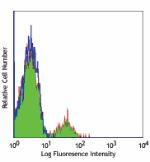
Human peripheral blood lymphocytes stained HIB22 FITC -
PE anti-human CD22
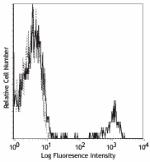
Human peripheral blood lymphocytes stained with HIB22 PE -
PE/Cyanine5 anti-human CD22
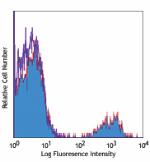
Human peripheral blood lymphocytes stained HIB22 PE/Cyanine5 -
Purified anti-human CD22

Human peripheral blood lymphocytes stained with purified HIB... -
APC anti-human CD22
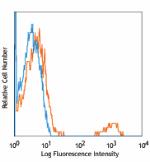
Human peripheral blood lymphocytes stained with HIB22 APC -
PE/Cyanine7 anti-human CD22
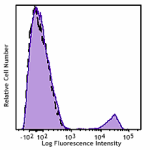
Human peripheral blood lymphocytes were stained with CD22 (c... -
PerCP/Cyanine5.5 anti-human CD22

Human peripheral blood lymphocytes were stained with CD19 AP... -
Purified anti-human CD22 (Maxpar® Ready)
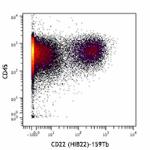
Human PBMCs stained with 154Sm-anti-CD45 (HI30) and 159Tb-an... -
Alexa Fluor® 647 anti-human CD22
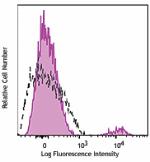
Human peripheral blood lymphocytes were stained with CD22 (c... -
APC/Fire™ 750 anti-human CD22

Human peripheral blood lymphocytes were stained with CD22 (c... -
Brilliant Violet 421™ anti-human CD22
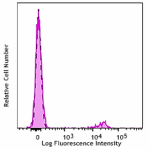
Human peripheral blood lymphocytes were stained with CD22 (c... -
Brilliant Violet 510™ anti-human CD22

Human peripheral blood lymphocytes were stained with CD22 (c... -
APC/Cyanine7 anti-human CD22

Human peripheral blood lymphocytes were stained with CD19 FI... -
PE/Dazzle™ 594 anti-human CD22

Human peripheral blood lymphocytes were stained with CD19 Br... -
PerCP/Cyanine5.5 anti-human CD22
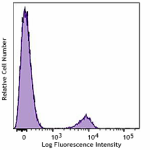
Typical results from human peripheral blood lymphocytes stai... -
Spark Violet™ 423 anti-human CD22

Human peripheral blood lymphocytes were stained with anti-hu... -
GMP PerCP/Cyanine5.5 anti-human CD22

Typical results from human peripheral blood lymphocytes stai...
 Login / Register
Login / Register 













Follow Us